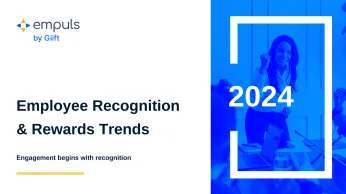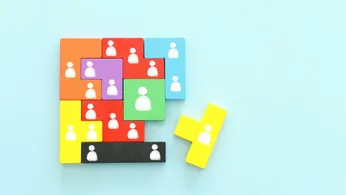In questa pagina
- What is recognition?
- What is gratitude?
- Why is it important to create a culture of recognition and gratitude in the workplace?
- Benefits of building a culture of recognition and gratitude in your workplace
- 10 Ways to create a culture of recogniton and gratitude in the workplace
- How Empuls fuels a culture of recognition and gratitude
Imagine walking into work every day knowing your contributions matter—that your effort isn’t just noticed, but genuinely appreciated. That’s the power of a culture of recognition and appreciation.
And it couldn’t be more relevant today. In a recent survey by McKinsey, 40% of employees reported they were likely to leave their current job in the next 3–6 months, as the Great Resignation shows no signs of slowing down. Employees are no longer just chasing paychecks—they’re seeking purpose, belonging, and to feel valued in their work.
This is where building a culture of gratitude becomes your secret weapon. It’s not about one-off perks or token gestures. It’s about making gratitude and recognition a daily ritual—woven into the way teams collaborate, celebrate, and grow together.
So, how do you create a culture of recognition that doesn’t feel forced or forgotten? One that energizes people, boosts retention, and inspires them to do their best work?
This blog is your blueprint. Let’s explore why recognition and gratitude matter more than ever—and how to make them the heartbeat of your workplace culture.
What is recognition?
Recognition, in general, is acknowledging all the positive things in life, such as the goodness in other people, events, and experiences. Employee recognition acknowledges employees' inherent value, not just their work performance.
Building a culture of recognition involves acknowledging the contribution of employees for their meaningful impact on the bigger picture. Whether it is thanking them for a job well done or recognizing their efforts to help other departments or a member in need, employee recognition encompasses it all.
What is gratitude?
Gratitude, a close sibling of recognition, takes a step further to recognize the influence of outside forces on our success.
The word gratitude is derived from Latin and means 'thankfulness'; therefore, it can also be thought of as a 'thankful recognition.' Gratitude in the workplace is the foundation of trust, empathy, and communication, all of which are the most sought-after attributes of a strong organizational culture.
Why is it important to create a culture of recognition and gratitude in the workplace?
Human beings are social animals, and relationships are fundamental to any group structure–be it a family, a group of friends, or colleagues. Unfortunately, in the middle of hectic work cycles, employees get little time to bond to the team and organization in productive ways.
A culture of recognition and gratitude fills in the gaps by engaging employees in thank-you activities that build trust while making them feel valued. At an organizational level, a culture of recognition and gratitude is closely tied to productivity, engagement, and employee retention.
Benefits of building a culture of recognition and gratitude in your workplace
Building a culture of recognition goes beyond handing out praise—it's about creating a workplace where people feel seen, valued, and motivated to do their best. Here are a few key benefits that come with making recognition part of your everyday work culture.
1. Può aumentare il morale dei dipendenti e la soddisfazione sul lavoro
When the employees of an organization are appreciative of one another, it has the effect of lifting employee morale. It motivates them to work as a team and improves job satisfaction on the whole.
2. Riduce lo stress e l'assenteismo
Una cultura della gratitudine fa sentire i dipendenti apprezzati, riducendo l'insicurezza del lavoro e lo stress ad esso associato. La diminuzione della tensione nell'ambiente di lavoro riduce anche le assenze per malattia e incoraggia le persone a presentarsi al lavoro.
3. Aumenta la produttività dei dipendenti
I dipendenti che vengono regolarmente apprezzati dai loro manager e colleghi sono più fiduciosi e impegnati nel loro lavoro. Questi dipendenti felici sono desiderosi di ottenere prestazioni migliori e di mantenere il loro ruolo di dipendenti apprezzati.
4. Aumenta la fidelizzazione dei dipendenti
Productive and engaged employees with the strong work culture of gratitude are satisfied with their job. Moreover, having such stability and nurturing atmosphere at work can significantly reduce employee turnover.
5. Aiuta ad attrarre talenti
Una solida cultura del lavoro trasforma i dipendenti in ambasciatori dell'organizzazione, favorendo gli sforzi di reclutamento. Inoltre, il passaparola dei dipendenti soddisfatti migliora la proposta di valore del datore di lavoro e attira i migliori talenti.
10 Ways to create a culture of recogniton and gratitude in the workplace
The key to unlocking higher levels of engagement, happiness, and productivity in the workplace lies in creating a culture of appreciation and gratitude. So, here are some important tips on how to build a culture of appreciation and gratitude at work:
1. Inviare tempestivamente note di ringraziamento e messaggi di posta elettronica
Whether for closing a deal, securing new business, achieving goals, or generating new ideas, make it a habit to send thank you notes and emails. Being prompt with your appreciation shows your employees that you are grateful for their efforts and value their presence in the workforce. To make it highly effective, send out the email immediately after an event or write a hand-written note to make it extra memorable.
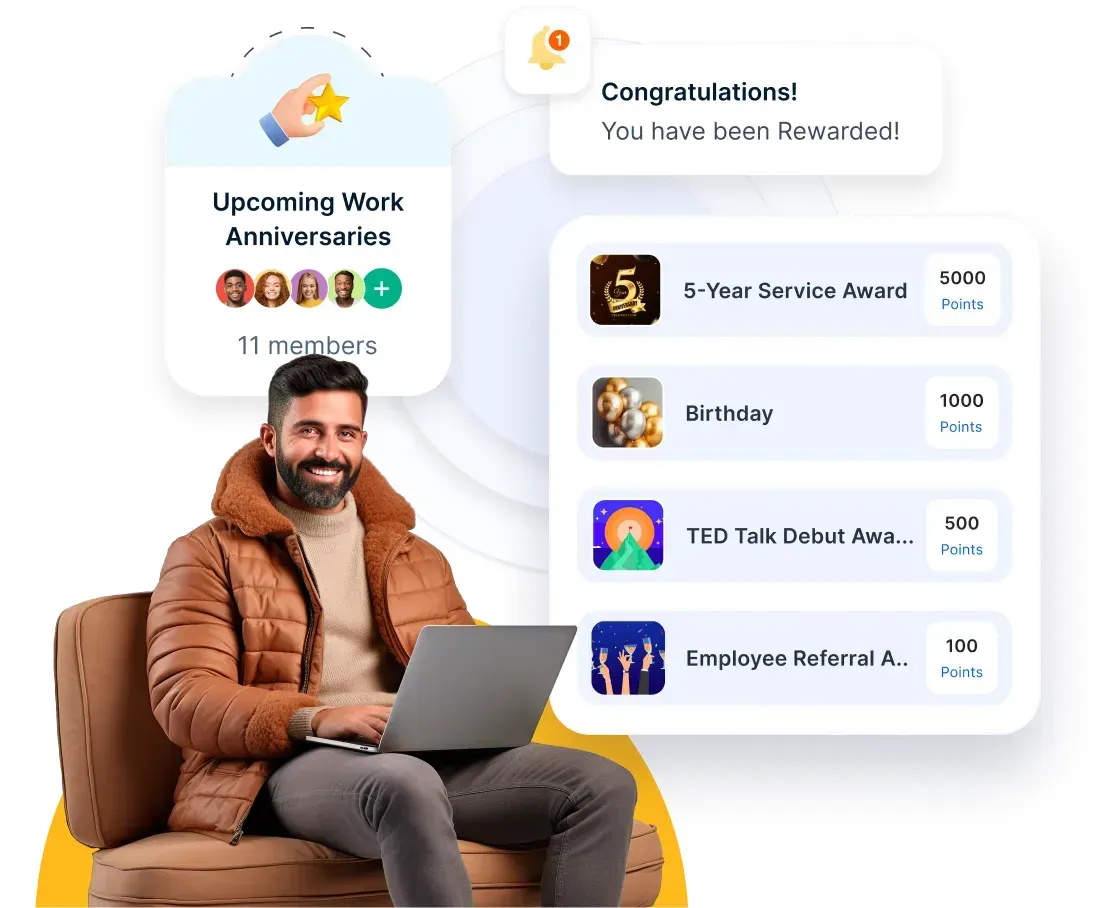
Automate thank-yous and milestone celebrations with ease
Why wait to say thanks? Empuls makes it easy to send automated appreciation messages and gifts for birthdays, work anniversaries, project completions, and more. With built-in workflows and smart nudges, you can ensure that no moment of recognition slips through the cracks.
Learn More
2. Personalizzare l'approccio all'apprezzamento
L'apprezzamento è più efficace quando viene consegnato in modo altamente personalizzato. Anche se la personalizzazione di per sé ha un forte impatto, apprezzare i dipendenti nel modo in cui essi amano essere apprezzati può fare la differenza.
Ad esempio, mentre alcuni sono entusiasti di un semplice biglietto di ringraziamento, altri si aspettano un regalo tangibile o un riconoscimento pubblico per il loro successo. Il modo per capire il loro linguaggio di apprezzamento è osservare come apprezzano gli altri. I manager e i capisquadra possono avere un'idea personalizzata dei membri del loro team e determinare il modo migliore per apprezzare ogni singolo individuo.
3. Festeggiare le vittorie grandi e piccole
La celebrazione di grandi vittorie è necessaria per spezzare la monotonia della lunga durata dei progetti e restituire ai dipendenti maggiore passione, slancio e concentrazione. Le grandi celebrazioni sono anche un momento in cui i datori di lavoro possono essere creativi con i loro premi. Anche i piccoli successi meritano di essere festeggiati, perché costruiscono il percorso verso i grandi successi.
Il segreto per mantenere il morale è suddividere i compiti in pezzi di dimensioni ridotte, con un apprezzamento frequente per ogni piccola vittoria. Piccole e frequenti pacche sulle spalle sono ciò che mantiene i dipendenti sulla retta via per rimanere produttivi.
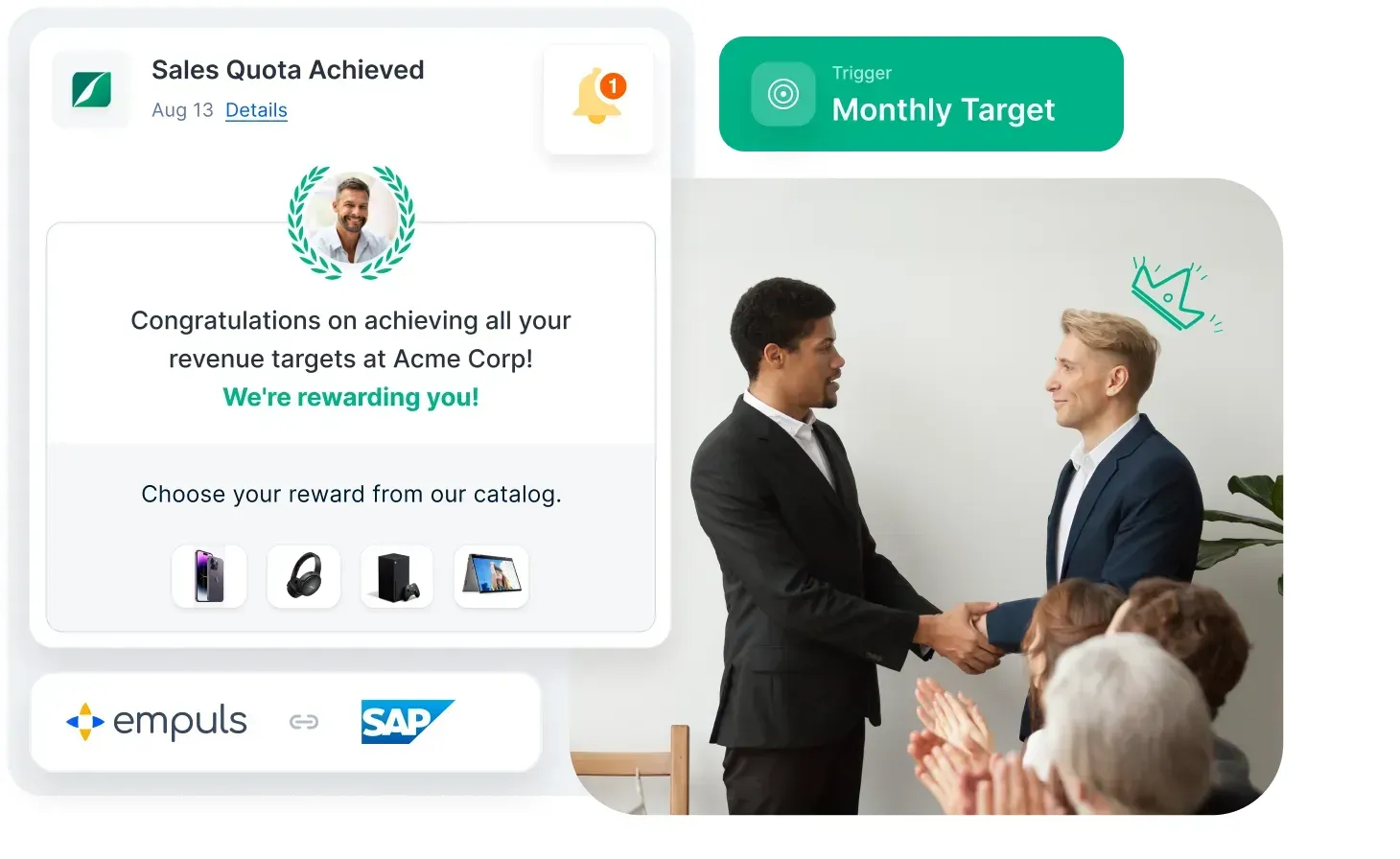
Celebrate wins—big and small—with visibility
Empuls’ company-wide social feed turns individual accomplishments into collective celebrations. From shoutouts to wishboards, every win can be broadcast to boost morale and motivate others to follow suit.
4. Incorporare la gratitudine nella leadership
I leader nella gestione di un'organizzazione hanno la responsabilità di guidare gli individui e i team verso gli obiettivi organizzativi. Tuttavia, con lo stress e l'ansia di essere reattivi al dinamico panorama aziendale, i leader raramente hanno il tempo di apprezzare i loro team.
La condizione è ulteriormente aggravata dalla mancanza di fiducia di molti dipendenti nei confronti del management. I leader possono rafforzare il morale e la fiducia dei dipendenti organizzando sessioni di debriefing di gratitudine dopo il completamento del progetto e apprezzando attivamente tutti per il loro contributo periodicamente.
Since implementing this personalized approach, we've observed a 35% increase in employee engagement and a 25% decrease in turnover rates. This strategy has also positively impacted our customer relations, with a 20% boost in repeat customer interactions. These figures underscore the significance of a leadership style that's not just about guiding, but genuinely appreciating each individual's contribution to our collective success.
5. Rendete la gratitudine parte della vostra narrazione
Your social media posts, blog content, podcasts, vlogs, and newsletters form the narrative about your organization. Weaving gratitude into your stories is a component of building a culture of employee appreciation. Include stories that talk about the contribution of your employees to your success in a tone that is highly appreciative and grateful. Talk about gratitude as part of the organization’s culture from the top down and across.
6. Creare occasioni per esprimere gratitudine
Per costruire una cultura della gratitudine, tutti devono avere la possibilità di partecipare. Il cambiamento può avvenire sotto forma di riunioni informali, ogni mese o ogni settimana, in cui ognuno ha la possibilità di esprimere la propria gratitudine a singoli individui o all'intero team.
Other exercises can include writing a gratitude journal, leaving anonymous gratitude notes on a notice board, or gratitude box entries for something good that happened at home or work. Employee rewards and recognition programs established by organizations are also a great way to reinforce a culture of appreciation.
7. Evidenziare le migliori qualità degli individui
La costruzione di una cultura dell'apprezzamento dei dipendenti è incompleta se non si mette in risalto l'individuo. Apprezzare le migliori qualità dei singoli dipendenti è uno dei modi più potenti, se non il più potente, per far emergere il meglio di una persona.
Apprezzare qualità raramente riconosciute come l'onestà, l'ammissione degli errori e la disponibilità a imparare e cambiare. Un esercizio che va nella stessa direzione potrebbe essere quello di far sedere a turno ogni dipendente sulla "sedia calda dell'apprezzamento" mentre i membri del loro team parlano delle loro migliori qualità.
8. Ringraziare chi è raramente apprezzato
In tutte le organizzazioni ci sono dipendenti che raramente o quasi mai vengono riconosciuti per il loro lavoro che fa funzionare senza intoppi la macchina organizzativa. Si tratta di persone che lavorano in ruoli di supporto come l'IT, le risorse umane, la contabilità, la manutenzione e il personale addetto alle pulizie.
Ringraziarli periodicamente è fondamentale per costruire una cultura dell'apprezzamento, in quanto evidenzia l'interdipendenza dei diversi reparti di un'organizzazione. Siate autentici nell'apprezzare gli eroi non celebrati e aumenterete il morale di tutti nell'organizzazione.
9. Promote peer-to-peer appreciation
Although appreciation by the managers and leaders is significant, peer-to-peer appreciation has a more profound impact. Employees in every team share a sense of comradery and the highest honor one can receive is to be recognized and thanked as an important team member. Establishing peer-to-peer recognition programs can solidify your efforts toward building a culture of appreciation and gratitude.
Empuls empowers everyone to participate in creating a culture of gratitude through peer-to-peer recognition tools. Employees can give kudos, send hi-fives, and nominate peers for awards—strengthening camaraderie and trust across teams.
10. Build a culture of appreciation in the workplace
Employee recognition is central to creating a culture of appreciation at the workplace. Recognition of employees involves recognizing not only the outcomes but also the efforts and the progress.
Public recognition in the form of company-wide shoutouts boosts the morale and self-esteem of employees. Recognition can take the form of congratulating on completing projects, reaching milestones, or even a simple “thank you.”
How Empuls fuels a culture of recognition and gratitude
Want to make recognition second nature at your workplace? That’s where Empuls steps in.
Empuls isn’t just another HR tool—it’s your all-in-one sidekick for sparking joy, boosting morale, and creating those "you matter" moments across the organization. It makes recognizing and rewarding your team as easy (and fun) as sending a GIF.
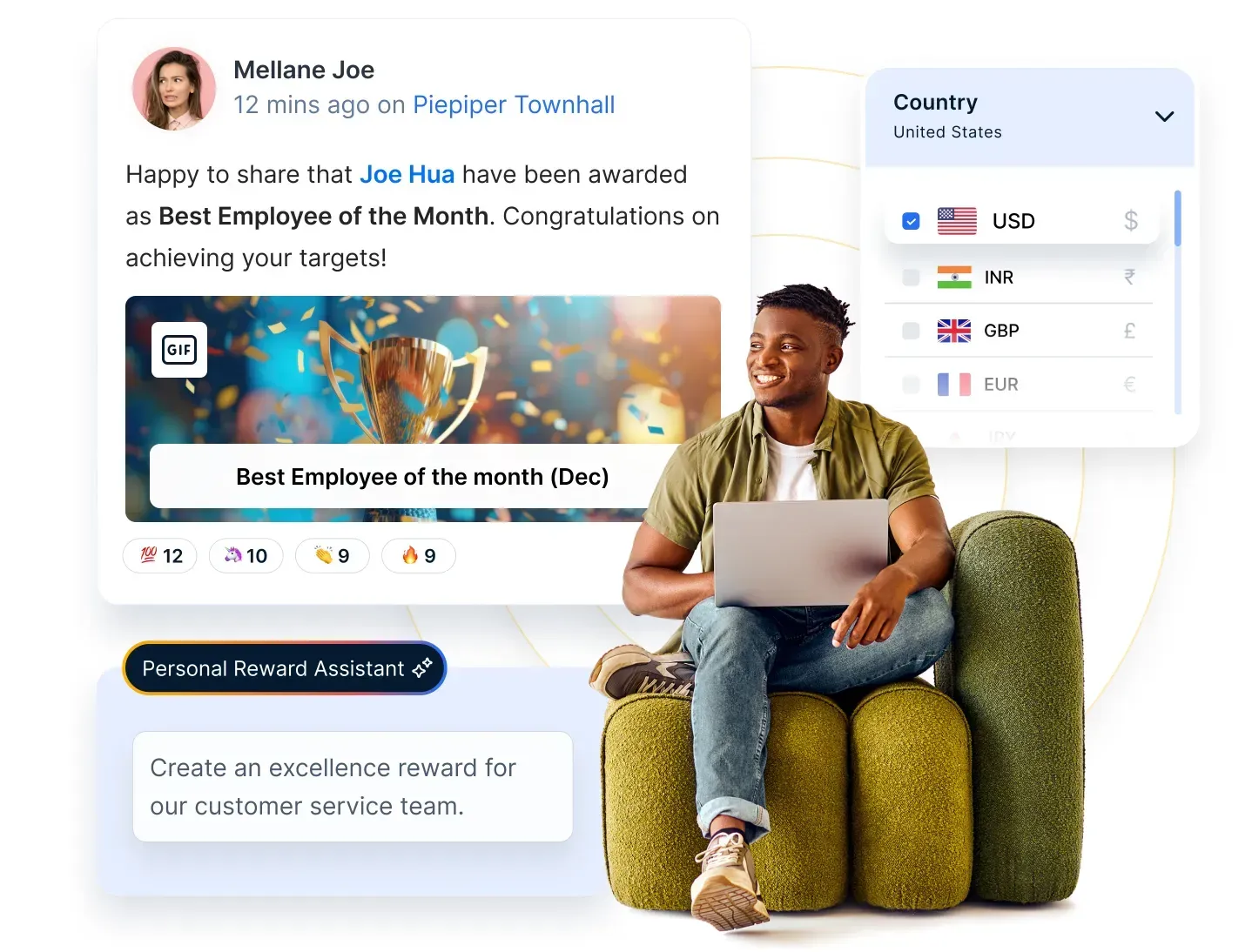
Here’s how Empuls helps you build a culture where gratitude flows and recognition shines:
- Recognize in real time With smart nudges and seamless workflows, Empuls makes it easy to appreciate someone the moment they go above and beyond—no more “I’ll thank them later” moments.
- Make every milestone magical: Birthdays, work anniversaries, service milestones—you name it, Empuls celebrates it. From automated wishes to curated rewards, it's all taken care of.
- Peer-powered positivity: Give everyone a voice. Empuls enables peer-to-peer shoutouts, hi-fives, and appreciation badges, turning teammates into cheerleaders.
- Recognition that’s actually rewarding: Choose from a global catalog of gift cards, experiences, wellness perks, charity options, and more. Recognition becomes personal, memorable, and meaningful.
- Let AI do the heavy lifting: Em, the AI assistant, helps managers spot recognition gaps so that no one feels left out. It’s like having a gratitude compass built right into your culture.
Put recognition in the spotlight: From townhalls to social feeds, Empuls turns recognition into a shared celebration. Everyone sees it, feels it, and wants to be a part of it.
Book a demo with Empuls today and start turning everyday moments into reasons to celebrate.
Riflessioni conclusive
As social animals, we are wired for acceptance, recognition, and gratitude from our peers. To establish a culture of gratitude, it is essential to start from the top-level management and let it trickle down to teams and individuals.
A culture of recognition takes time to establish, but once embedded, it builds trust, strengthens teams, and fosters lasting engagement. Over time, people begin to believe in it—and that’s when it becomes a true culture, not just a practice.








